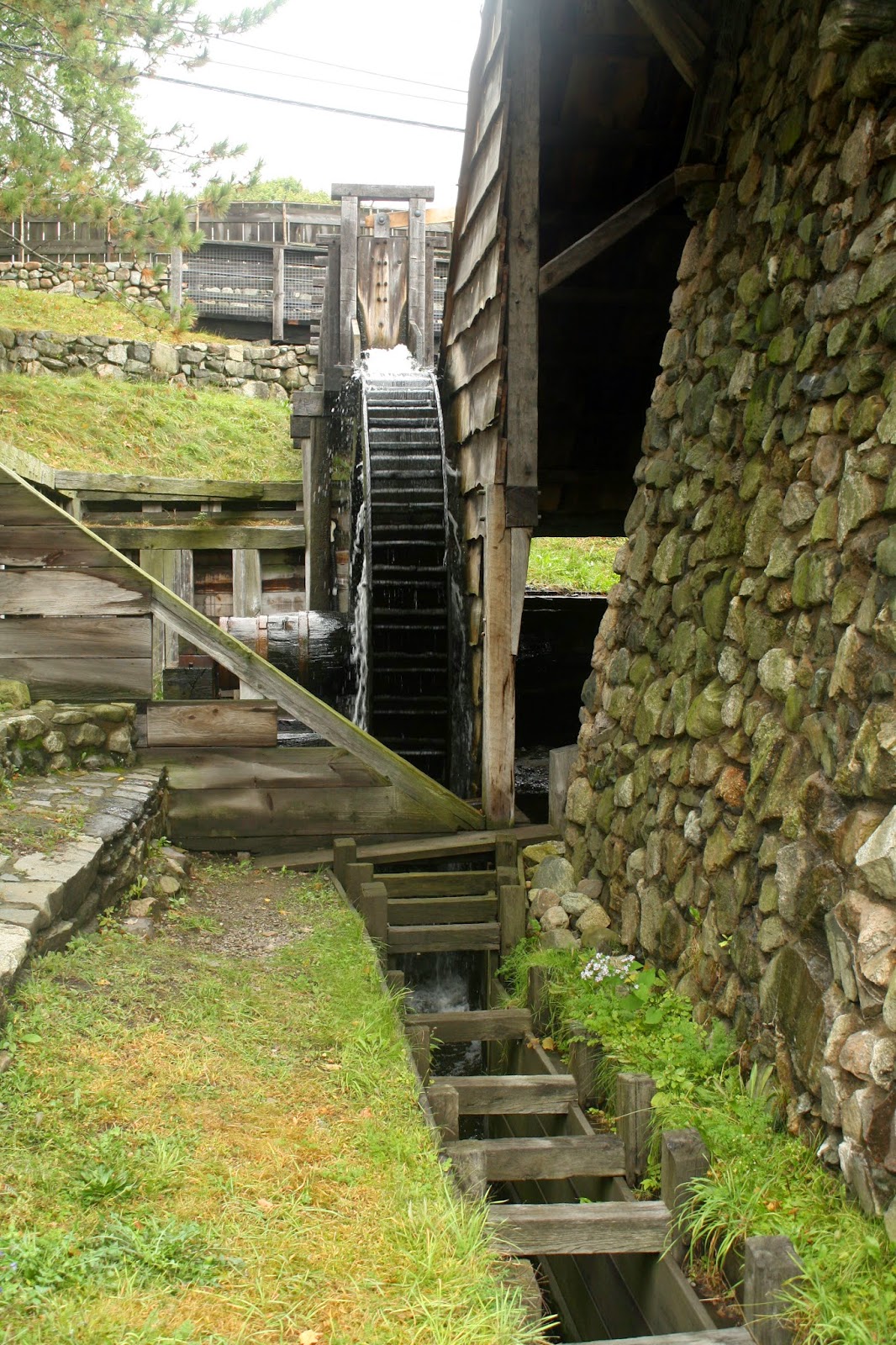When we checked out this morning, we immediately realized how Rockport keeps its taxes down for the people who live here and why this was the most costly motel of our trip. The city tax is more than the state tax and is added on after the state tax. Rather ingenious for a small town that attracts lots of tourists.
 |
| Lobster pods piled on the dock line the Rockport Harbor. |
 |
| Early in the morning a cold wind whips across the water in Rockport. |
 |
| This shack, dubbed Motif #1, is "the ultimate artist's subject of the New England Coast." |
The towns here are all lovely and quaint--Gloucester, Rockport, Manchester, Beverly--and the commuter rail line even connects to Boston. Huge estates line Route #127 in Beverly. There is definitely money in this town. We stopped for a student to cross the pedestrian walkway at a private academy and then passed Endicott College. What a gorgeous campus! We drove around the grounds admiring the manicured landscape and beautiful buildings.
Salem, once the nation's sixth largest city, challenged my navigational skills with one-way streets and road-closing detours. It rained lightly and turned to a fine mist, as we found a spot to park near the Salem Custom House. We put money in the meter and walked around the block.
Friendship of Salem, the replica of a merchant vessel moored at Derby Wharf, only offered tours on Saturdays. It is the full-size replica of a three-masted square-rigged Indiaman, the name given to a ship that can sail to China, but we couldn't board. The Custom House and two nearby buildings could only be visited by tours at 2:30 p.m. Thursday afternoon to a limited group of 25 who obtained tickets several blocks away. How things have changed in Salem! Many years ago I sat in Nathaniel Hawthorne's desk in the Custom House, looking out at Derby Wharf, and imagining ships like the Friendship coming and going when Salem was the sixth busiest port in the U.S. Hawthorne worked as Surveyor of the Port in Salem for three years, and it was at that desk that he wrote The Scarlet Letter. Now we couldn't even get into the building.
 |
| The statue of Roger Conant pays tribute to Salem's first citizen. |
 |
| Nathaniel Hawthorne's statue honors one of America's great writers. |
We walked through the Scales Building, that housed scales that were carted to the wharves when ships arrived in order to weigh and tax the goods, and the Public Stores Building of 1819, that received and stored up to a thousand chests of tea from a single ship before they were distributed for sale elsewhere. Here products like spices, coffee, silks, India cotton and gold dust were kept temporarily. The warehouse is small since enormous profit could be made from high-value, low-bulk luxuries.
 |
| The lighthouse at the far end of Derby Wharf still guides boats into the harbor at Salem. |
Noon was a perfect break for coffee across from the Custom House, and we still had time in the meter.
 |
| The storage building on Derby Wharf retains the flavor of a sailing era long gone by. |
 |
| Derby Wharf extends into the harbor from the Salem Custom House. |
 |
| The square-rigged replica Friendship, moored at the wharf, stands ready for the next sail to far-off ports. |
Imaginative and demanding, he evoked loyalty from his ship captains and was respected for his knowledge of ship building and sailing. He expected his captains to return from a voyage with 100 percent profit, but he also gave them total trading freedom. Ships sailed with cod, nails and fish hooks "to the farthest port of the rich East," Salem's motto. It earned Salem the reputation of the Venice of the New World.
But no sooner than we walked outside, the dribbles started again. I kept the camera protected in a plastic bag.
 |
| Winter Island Lighthouse still guides boats into Salem Harbor. |
Winter Island Lighthouse, built in 1871, still guides vessels into Salem Harbor. At an adjoining park and campground labeled Waikiki Beach, people had pitched tents. "This doesn't strike me as camping season," said Andy, as the light rain started again. "I wonder if they are homeless."
Could be, I thought. At one site with bikes and a cooking set-up, a middle-school-age boy poked his head out from behind an awning. It was 58 degrees.
 |
| Reconstructed Saugus Iron Works give visitors a glimpse of a world long past in Massachusetts. |
 |
| One of several huge bellows pumps air into the gigantic furnaces to smelt ore. |
 |
| A water wheel supplies the power to pump the bellows. |
 |
| Park rangers Gregg and Sean explain how the Saugus Iron Works operated in days gone by. |
In spite of the rain and dark skies, this had been a fun day of historical enlightenment.
In the motel parking lot we untangled the lobster rope Andy found two days ago in Ogunquist, Maine. We stretched the pieces across the parking area to untie the knots. It was a little like unraveling history.
No comments:
Post a Comment